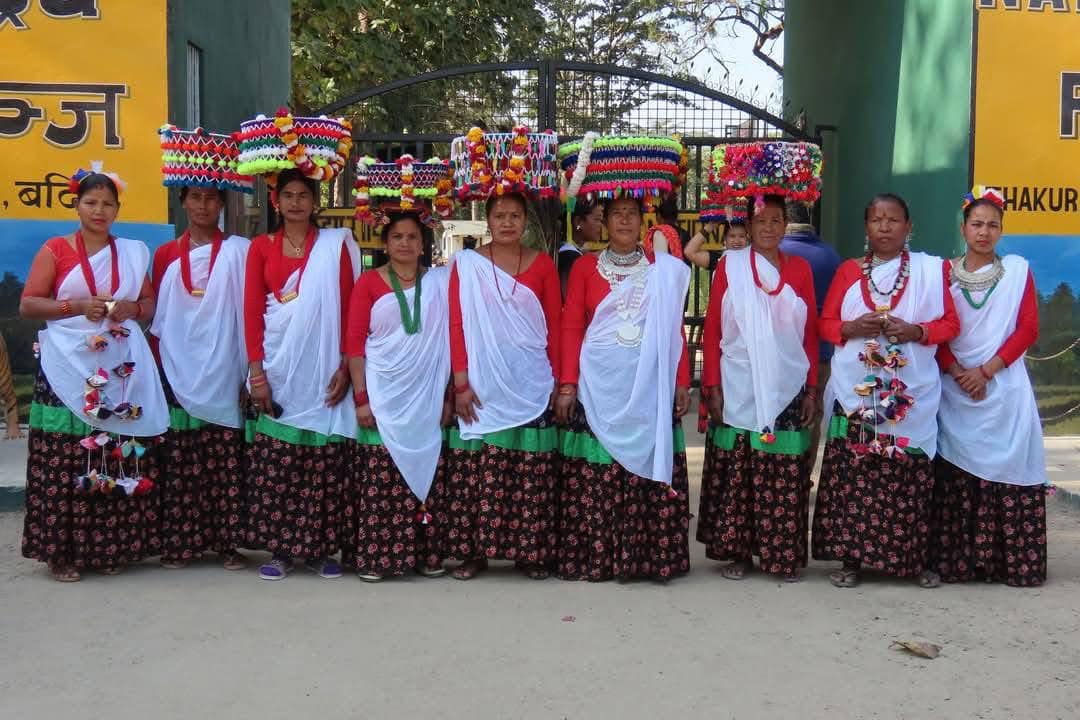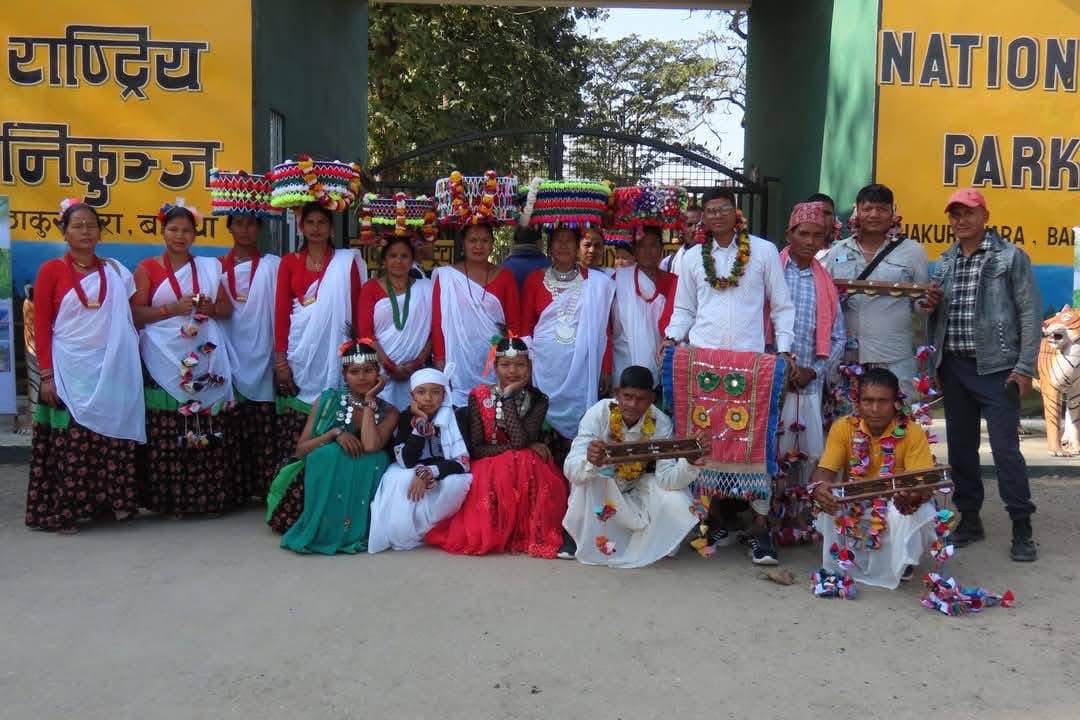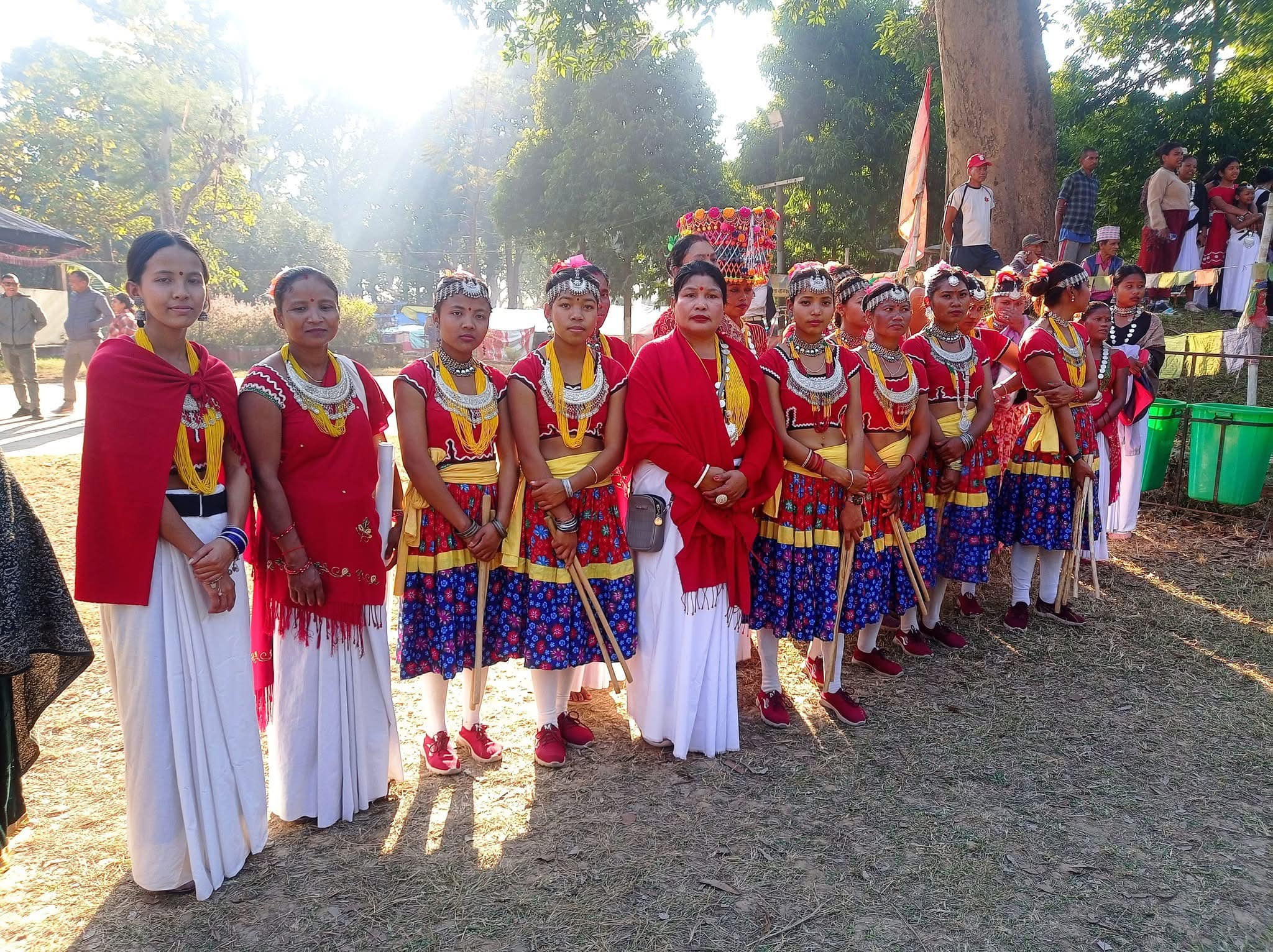Thakurdwara Village in Bardia, Nepal, is a vibrant hub of Tharu cultural diversity, offering a unique insight into the rich heritage of the Tharu community. This indigenous group has preserved its traditions and way of life for centuries, showcasing a beautiful blend of history, art, and nature.

1. Traditional Attire and Ornaments
Tharu men and women proudly wear traditional attire that reflects their cultural identity. Women wear colorful blouses and long skirts (locally called Lahanga) often embroidered with traditional motifs. They accessorize with intricate silver jewelry, including necklaces, earrings, and bangles, which signify marital and social status. Men wear simple yet functional clothing, often made from natural fibers.
2. Unique Culinary Heritage
Tharu cuisine is a delightful representation of their agricultural lifestyle. Signature dishes include:
- Dhikri: Steamed rice flour dumplings, often served with lentil soup.
- Ghonghi: Snail curry, a protein-rich delicacy.
- Bagiya: Fried or steamed rice cakes.
- Chichar: Sun-dried fish prepared with spices.
These dishes are traditionally cooked over wood-fired stoves, enhancing their flavor.

3. Music and Dance as Storytelling
Tharu folk music and dance serve as a medium of storytelling, often narrating historical events, daily life, or mythology. Popular dances include:
- Sakhiya Dance: Celebrated during festivals, performed by men and women in sync with folk songs.
- Jhijhiya Dance: A prayer dance performed by women, often to invoke blessings during times of hardship.
- Chhokra Dance: Energetic dances by young men, usually performed during festive gatherings.
4. Artistic Expressions
Tharu art is deeply connected to their daily life and spiritual beliefs. Intricate wall paintings, known as Bhitti Chitra, often depict religious symbols, nature, and village life. Handcrafted items like bamboo baskets, mats, and pottery are practical yet artistic representations of their creativity.
5. Sustainable Architecture
Traditional Tharu houses are eco-friendly and built using locally sourced materials like mud, thatch, and bamboo. Their unique design keeps the interiors cool during hot summers and warm in winters. The walls are often adorned with vibrant murals and motifs that hold cultural significance.
6. Religious and Spiritual Practices
The Tharu people have a deep connection to nature and practice animism alongside Hinduism. They worship deities like Bhimsen, Baraha, and ancestral spirits. Festivals often include rituals to honor nature, ancestors, and the cycle of seasons.
7. Festivals and Celebrations
Tharu festivals are a vibrant display of their culture.
- Maghi: Celebrates the Tharu New Year with feasts, dances, and rituals. It is a time for family reunions and new beginnings.
- Jitiya: A fasting festival observed by women for the well-being of their families.
- Faguwa: Their version of Holi, celebrated with colors and joy.
8. Relationship with Nature
Tharu people have an intimate connection with the forests and rivers of Bardia. They rely on sustainable practices for farming, fishing, and gathering resources, living in harmony with the environment.
9. Warm Hospitality
Tharu hospitality is renowned for its warmth and generosity. Visitors are often welcomed with local delicacies, cultural performances, and stories about their history and traditions.

Thakurdwara Village is not just a place but a cultural experience, where the essence of Tharu heritage is alive in every aspect of life. For anyone visiting Bardia, exploring this cultural diversity is an unforgettable journey into Nepal’s rich ethnic tapestry.







